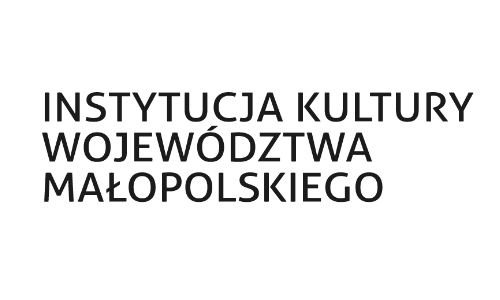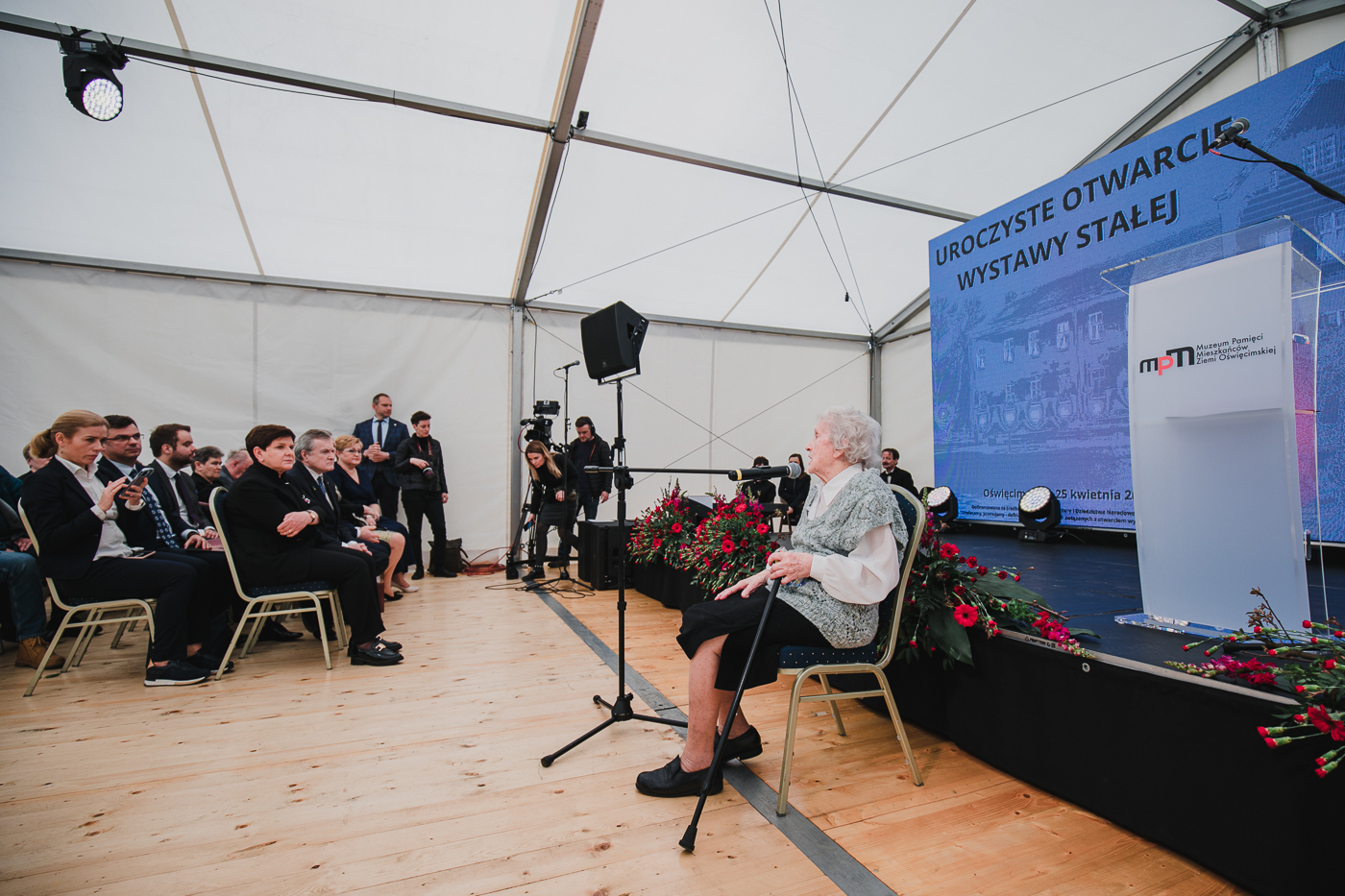Five years after the signing of a letter of intent by representatives of the Oświęcim district and the Minister of Culture and National Heritage, the permanent exhibition at the Remembrance Museum was officially opened on April 25. The exhibition is dedicated to the residents of the Oswiecim area who risked their lives to help the prisoners of the Auschwitz-Birkenau camp. During the official opening, Director Dorota Mleczko received the badge of honour “Meritorious for Polish Culture” from Deputy Prime Minister, Minister of Culture and National Heritage Prof. Dr. Piotr Gliński.
The ceremonial inauguration of the event began with music by the duo Kaja Kosowska (piano) and Krzysztof Wozniczko (viola) performed. The main musical theme came from the film “Schindler’s List.”
As the Remembrance Museum director noted during her official speech, the main task of the Museum, besides modernizing the facility, creating a permanent exhibition, and arranging an educational path for the youngest – was to acquire museum exhibits and, above all, accounts of witnesses to the history of the residents of the Land of Oświęcim. To date, it has been possible to document nearly 2,000 names of people who brought aid to prisoners during World War II, risking their own lives and those of their loved ones.
The museum will be open from May 1, and the permanent exhibition will be open to the public from May 2. “Our dream is to make you feel at home here. We will always welcome you joyfully,” Dorota Mleczko addressed the guests.
At the opening of the exhibition, Deputy Prime Minister and head of the Ministry of Culture Piotr Gliński stressed that the Remembrance Museum is an “institution of identity and community. It refers primarily to the memory of the community and the formation of the identity of this community. And how important, fundamental to the continuation of our civilization, is precisely the value of community identity – we have known about this for years, but for the last 2 months in particular we have known much about it (…)”.
As the deputy prime minister added, “This is another remembrance institution that we are opening up to society that denies terra incognita and recovers memory. For all the years, many of these institutions that were and are needed by Poland, precisely because they build our identity and the strength of our community, were not created and were not built. Now, we are very pleased. For me personally, I am satisfied that these places are being created at the moment. This is another institution that is reclaiming memory.”
The Minister of Culture and National Heritage also emphasized the “modern professionalism” of Poland’s memory institutions. “They are created by a community of professionals, Polish museum professionals (…) These are institutions focused on educating the next generation, involving all age groups (…) We talked with the Director about future projects (…)”
Piotr Ćwik, Deputy Head of the Chancellery of the President of the Republic of Poland, read out a letter from Polish President Andrzej Duda. – (…) “The dignified honouring of heroes worthily serving their homeland, nation and neighbours is our duty and an inspiration to work for the good of the Republic,” wrote Polish President Andrzej Duda.
MEP Beata Szydło, who has been involved in the creation of the Museum from the beginning, stressed that the opening and creation of the cultural institution “is not a summary of a certain history. – It is the beginning of history. Today is the beginning of the great mission of this place (…) We should speak out about how things were, show places, talk about facts, remember people who sacrificed their lives, who suffered, who put a part of their hearts to save those who were behind the wires.”
Oświęcim District Governor Andrzej Skrzypiński noted that he had already had the opportunity to visit the Museum and see the permanent exhibition, which was created thanks to donors and witnesses to history who shared their memories and memorabilia. He emphasized the commitment of MEP Beata Szydło, the Ministry of Culture and National Heritage and the District. “This Museum was created thanks to the financial commitment of the Ministry of Culture and National Heritage, as well as the personal commitment of Prime Minister Beata Szydło. From this place I would like to thank her for the fact that thanks to her commitment, as well as our help, it was possible to reach today’s beautiful day and open this wonderful facility,” said Andrzej Skrzypiński.
The ceremony did not lack the voice of witnesses of history, who received commemorative roses from museum workers. During the ceremony there was an opportunity to listen to the story of 99-year-old today Józefa Handzlik. During World War II, as a teenage girl, she helped her peer who was imprisoned by the Germans in Auschwitz by supplying her with medicine. The girl survived the camp and they managed to meet years later. As she emphasized during an emotional speech, the witnesses had waited a long time for this exhibition. “I’m glad that the museum has been established, that it is possible to tell what the situation was like. (…) We went through a lot at that time in Birkenau. We were displaced. I can still see my mommy having a heart attack. It’s hard to talk about it. The tears keep coming.”
The idea and concept of the permanent exhibition was presented to the guests of the event by Dr. Dorota Gorzelany-Nowak, author of the exhibition scenario.
During the inauguration of the official ceremony, representatives of the government, the province, parliamentarians, local government officials, councillors of the Oświęcim district, directors of educational and museum institutions, representatives of the clergy were present. A particularly important group were witnesses of history because it is thanks to them and the handed down testimonies of history that future generations will know the history of those who helped the prisoners of Auschwitz.
The official part of the ceremony ended with a tour of the permanent exhibition, located on 3 levels of the building. Guests also had the opportunity to walk the outdoor educational path and explore the temporary exhibitions: “Faces of Aid” and “Creation of the Remembrance Museum” presented around the facility. The museum welcomes all visitors starting in May. For the first two months, admission is free. Advance admission reservations are required via https://bilety.muzeumpamieci.pl or telephone contact tel. 33 447 40 84. In turn, the Night of the Museums will be held on May 14, during which, in addition to an evening tour of the exhibitions, a light show on the facade of the museum building, is also planned. The public is invited to this event from 6 pm, with the first show at 9 pm.
Photo. Dominik Smolarek






